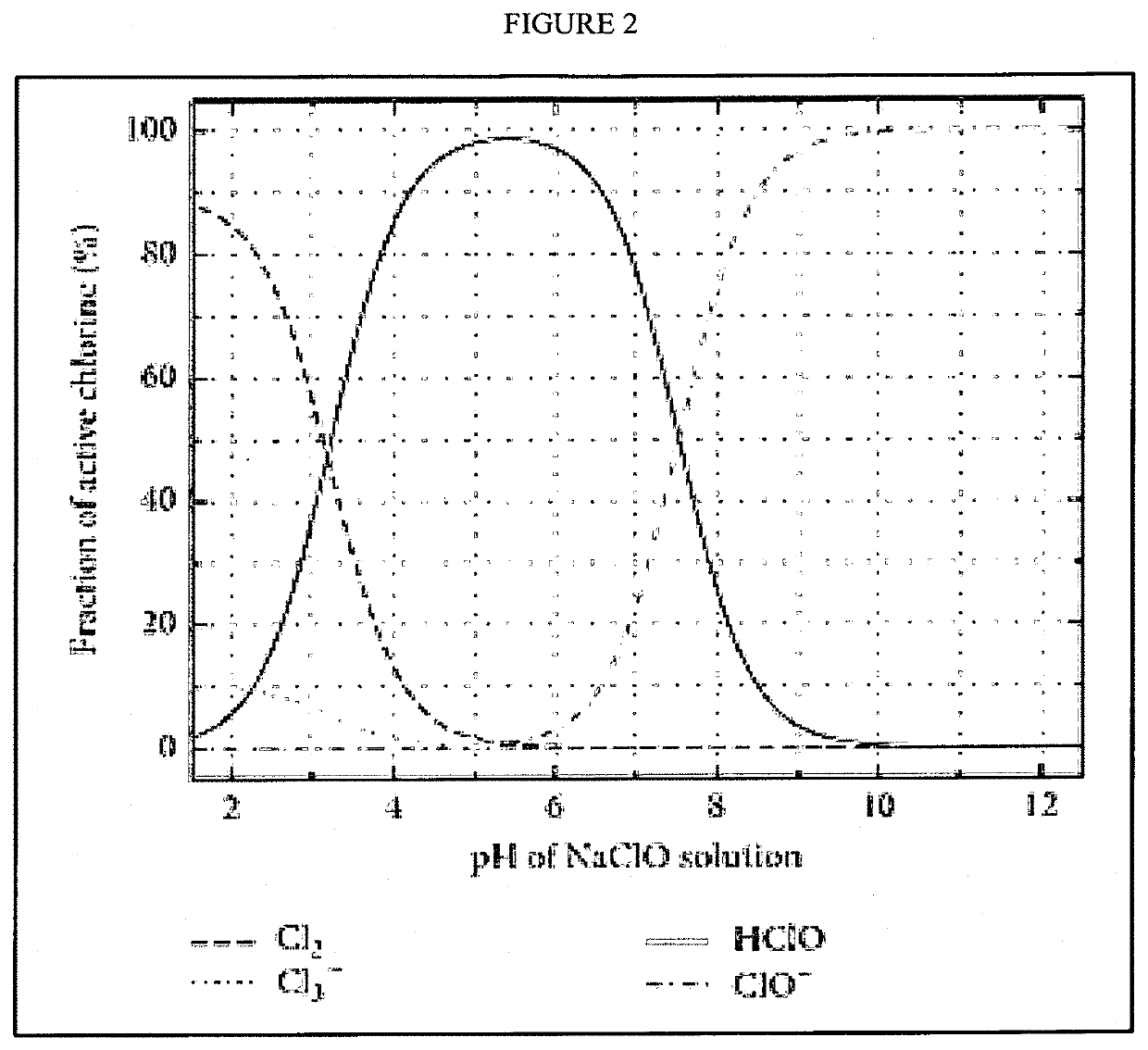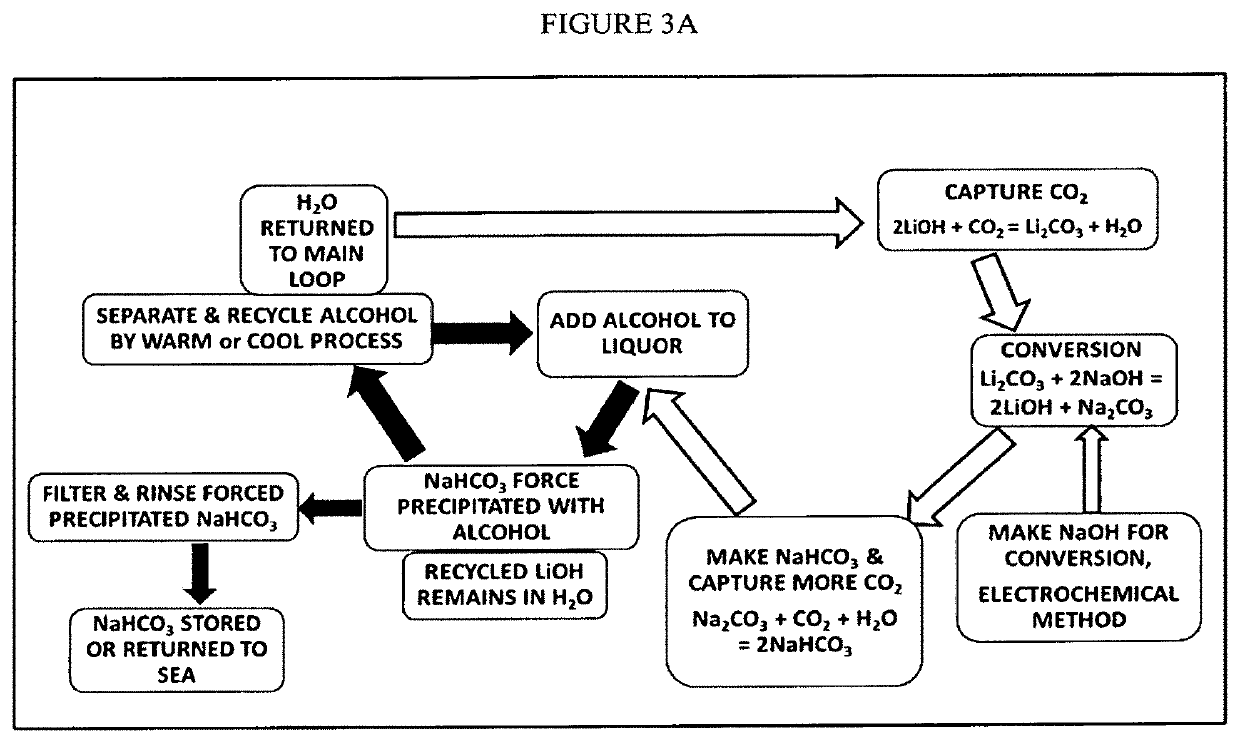CHEMICAL SEQUESTERING OF CO2, NOx and SO2
a technology of atmospheric gases and sequestration technology, applied in the direction of liquid degasification, separation processes, alkali metal sulfites/sulfates, etc., can solve the problems of limited success in capturing atmospheric gases once released into the atmosphere, difficulty in the development of low-cost sequestration technology, and danger to global warming, so as to achieve zero carbon footprint and high removal efficiency
- Summary
- Abstract
- Description
- Claims
- Application Information
AI Technical Summary
Benefits of technology
Problems solved by technology
Method used
Image
Examples
example 1
[0133]The process flow instruments used in the 1-Loop Process are described in FIG. 6 and in Table 2 below:
TABLE 2KEYDESCRIPTIONNOTEThe following summarize reactions that are occurring at each step in the overallreaction sequence. This information is also provided in the 1-Loop Process diagramshown in FIG. 6.ASO2 + NaOCl + H2O → NaCl + H2SO4BNO + NO2 + NaOCl + H2O → 2NaNO3 + 2HClCCO2 + NaOCl + H2O → HOCl + NaHCO3DNO + NO2 + 2NaOH + NaOCl → 2NaNO2 + H2OECO2 + NaOH → NaHCO3NOTEAll components and systems described below are assumed to be made frommaterials that are compatible with the chemicals / reagents, and process pressures,temperatures etc. that are applicable and relevant for the specific application. Pumpsand blowers required to move liquids and gases are not shown. There are manysensors and a process control system that are not shown.1Reaction vessel - typically cylindrical with one or more inlets for untreated gas atone end (Item 2) and one or more exists for treated gas at the ...
example 2
[0134]The process flow instruments used in the 2-Loop Process are described in FIG. 7 and in Table 3 below:
TABLE 3KEYDESCRIPTIONNOTEThe following summarize reactions that are occurring at each step in the overallreaction sequence. This information is also provided in the 2Loop Process diagram.A2 LiOH + CO2 → Li2CO3 + H2OBNa2CO2 + CO2 + H2O → 2NaHCO3NOTEAll components and systems described below are assumed to be made frommaterials that are compatible with the chemicals / reagents, and process pressures,temperatures etc. that are applicable and relevant for the specific application. Pumpsand blowers required to move liquids and gases are not shown. There are manysensors and a process control system that are not shown.1Reaction vessel - typically cylindrical with one or more inlets for untreated gas atone end (Item 2) and one or more exists for treated gas at the other end (Item 28).The vessel can be of any shape and configuration. It need not be linear as shown.The vessel is designed t...
PUM
| Property | Measurement | Unit |
|---|---|---|
| temperatures | aaaaa | aaaaa |
| temperatures | aaaaa | aaaaa |
| temperature | aaaaa | aaaaa |
Abstract
Description
Claims
Application Information
 Login to View More
Login to View More - R&D
- Intellectual Property
- Life Sciences
- Materials
- Tech Scout
- Unparalleled Data Quality
- Higher Quality Content
- 60% Fewer Hallucinations
Browse by: Latest US Patents, China's latest patents, Technical Efficacy Thesaurus, Application Domain, Technology Topic, Popular Technical Reports.
© 2025 PatSnap. All rights reserved.Legal|Privacy policy|Modern Slavery Act Transparency Statement|Sitemap|About US| Contact US: help@patsnap.com



